Use a relay. Use the 24V low-voltage power already in your home to switch the relay.
By amazing luck, there are HVAC relays used in whole-home air conditioning units, which are typically rated to switch 240V at 30A or 40A and cost under $20. Oversize your relay to at least 125% of the water heater's rating. If your water heater is bigger than that, you'll be into industrial grade contactors, and figure a couple hundred bucks.
Since we're dealing with mains power, we are obliged to follow the National Electrical Code or whatever applies to your jurisdiction. That is not that big a deal, but you do have to learn it, and do it properly, and consider paying an electrician to bless it. The consequences for noncompliance are most grave - house fires, lawyers, bankruptcy, jail if a person dies. You need to get the relay from an HVAC specialist (or Amazon or McMaster-Carr) but for the enclosure and cabling, talk to your local "electrical supply", often locally owned or regional companies... don't waste your time at Home Depot.
Site that relay as close as possible to the existing wiring, preferably at one end. Bring the 24V to the 240V, not the other way round. When you cut the cable, it won't have enough slack to make the connections to the relay, and you must leave 6" of slack in the box. There's no way to do it without new cable on one segment, so let it be a short one. That cable costs about $1/foot.
Once your mains voltage stuff is absolutely tip-top, Code gives you more leeway on the low-voltage stuff (doorbells, thermostats and the like.) However it cannot be run in the same conduits, boxes or raceways as mains power (with the obvious exception of the relay; you have to put it in there.)
HVAC relays generally have a 24 volt AC coil, which counts as "low voltage". It's no coincidence your house probably has a 24 volt AC transformer already... furnaces supply it to thermostats to switch A/C, heat, fan etc. It's also sometimes used for doorbells.
Important question: Can the reed relay can comfortably carry enough current to work the HVAC contactor directly? If in doubt, get a much smaller "booster" relay in between - the reed switch switches the small relay's coil, and its contacts switch the HVAC relay's coil at 24V. This also allows you to use other voltages for the small relay's coil, in case you'd rather drive it with 12V, 5V or 3.3V.
Amazon links give me (or somebody) a small commission. It tends to cause me to recommend products which Amazon sells.



